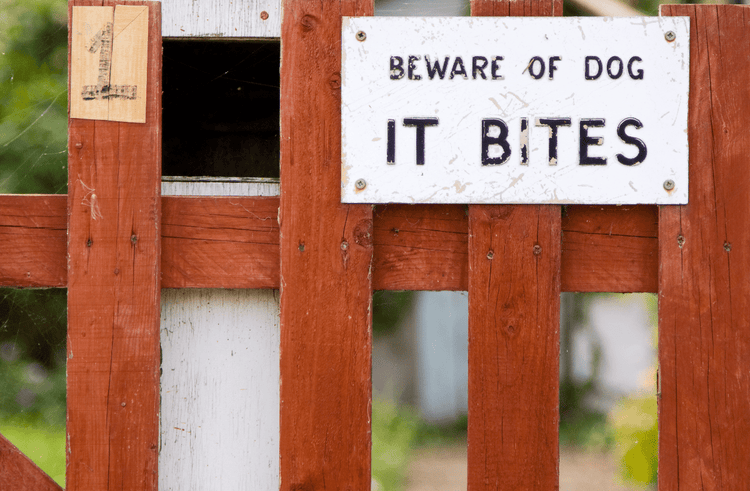
Maternal Aggression In Dogs
What self-respecting mother would not do all within her power to look after the welfare of her offspring? Not too many. But sometimes these feelings of protectiveness can be expressed as “maternal aggression” that can make a once-friendly pet virtually unapproachable.
Some of this protectiveness arises out of affection and concern of a mother for her young. However, nature and alterations in brain chemistry catalyze the response. The sight, sound, and smell of the newborn, as well as tactile signals received during nursing, cause the release of a “bonding hormone,” oxytocin, which seals the mother-infant bond (and has other mechanical effects on the uterus and other smooth muscle tissues). In addition to this change, blood levels of progesterone, the hormone of pregnancy, fall rapidly as estrogen levels climb. The calming effect of progesterone is lost and the more activating effect of estrogen replaces it. Also, and perhaps most significantly, the rise and fall of the milk-releasing hormone prolactin exactly parallels that of maternal aggression.
This series of biological events and the powerful feelings they promote is responsible for maternal protectiveness, which, in an extreme situation, will often show up as aggression. Maternal aggression is a post-partum characteristic of all mammalian species, including horses, pigs, dogs, cats and others. It is not wise to approach a mare and foal without forethought, and it is risky to vault into a formerly friendly pig’s stall right after she has given birth. Likewise, some caution should be exercised working around recently whelped bitches and recently kittened queens.
It is possible that people who are familiar and non-threatening will receive diplomatic immunity from this form of aggression, but unfamiliar people, familiar persons lacking the respect of their pet, and unwelcome members of the same or a different species, may be driven away in no uncertain terms.
Pregnant Dog Aggression
Bitches with pups may be more aggressive for all the same reasons as queens. Those that are more dominant and controlling prior to whelping will be more likely to show this type of aggression. This sort of aggression is really a hormonally enhanced version of dominance aggression in which the object being protected is the litter.
If maternal aggression is directed toward the dog’s owner and if the dog is large enough to pose a human health hazard, she may have to be kenneled for a while. Spaying, which eliminates the influence of estrogen, and subsequent treatment with synthetic progesterone, rapidly reduce maternal aggression. Spaying may be indicated for more than its immediate effects because victimized owners may not want to go through the experience again. In any case, maternal aggression of this magnitude likely has some genetic input and probably shouldn’t be propagated.
Dog Infanticide
Infanticide is an unpleasant variation on the theme of maternal aggression. When mothers give birth to young, and then find themselves in situations that are not conducive to rearing them, they will sometimes kill the whole litter. A rottweiler dog once killed her entire litter 24 hours post partum when they were returned to her after tail docking. She may have felt that they had been damaged or contaminated in some way and should be put out of their misery. This may seem something of a paradox but humans have been known to engage in this ultimate sacrifice, too. It is impossible to comprehend the suffering that precedes such sacrifice.
Infanticide of this nature is well known in laboratory rodents who kill their young if they have been handled too much or blooded. Presumably odors play a key role in triggering this fatal misapprehension and presumably this behavior has a biological precedent that favors long term healthful survival.
In Conclusion
Nature and nurture usually combine influences to produce behaviors that are beneficial for the survival of individual and the species. Maternal aggression is a short-term behavioral trait that makes perfect sense when viewed from this perspective. Pups and kittens are helpless without their mother’s support and protection. To juice up a mother’s protectiveness and willfulness at this critical fostering time is a logical and functional arrangement.
Nature is always logical and predictable if you understand that its prime function is to recycle the animal’s genes. The role of nurture is a little less obvious, but nonetheless evident. Experience lubricates the machinery of mothering so those more experienced moms make better moms. They learn how best to look after and defend their new babies, building on and taking pleasure in their success. There are occasional bad mothers who “just don’t get it,” but they are in the minority and the chance their offspring will make it to breeding age is correspondingly reduced.